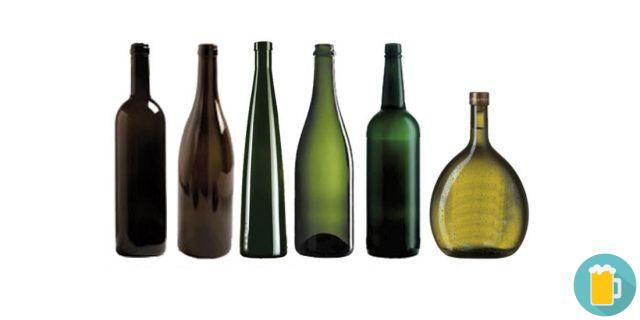The origin of the shapes of wine bottles
the premium bottles for wine they spread in the 1700 , although the earliest examples date back to several centuries earlier. For example, the ancestor of the chiantigiano fiasco it begins to use since end of the fourteenth century and even before that, round-shaped containers, resembling a wineskin, were already used, not made of glass but in leather, for safer transportation. The first models of blown wine bottles date back precisely to the second decade of 1700, in France and they had more of a bowl shape. Over time, the design changes until it is achieved bottles of a more elongated shape, more practical, used for the service as well as for the transport of wine. A end of 1800 the "industrial" production of the bottles begins. Each wine producing region had one typology of traditional wine, as is the case today, and local bottle producers have developed over time particular sizes and colors of the glass that best suited the storage and at the service of the main wine typology of the production area. For this reason the shape of the bottles is linked to the region of origin and almost always bears its name.

The main traditional shapes of wine bottles
Bordeaux bottle
La Bordeaux bottle, originally from the area of Bordeaux , is the most popular bottle on the market. It usually is dark for i Red wines while generally transparent or light green for white ones. The pronounced shoulder of the bottle helps to separate any funds that have accumulated in the bottle during theaging.
Bordeaux bottle with high shoulder
La High shoulder Bordeaux derives from the standard Bordeaux and is an aesthetic evolution. This form gives a greater elegance and therefore is used for particular wines, above all raisins.
Champagnotta bottle
La Champagnotta bottle it is mainly used for sparkling classic method o Champagne. The glass of this bottle has a greater thickness as it must resist the pressure exerted by the carbon dioxide dissolved in the wine. In addition, the inlet is equipped with a groove for anchoring the stopper crown, essential to fix the provisional capping in the vinification with the classic method.
Champagne Cuvée bottle
The so-called Champagne Cuvée it is a variant of the previous one, with a wider base and longer neck. The reasons are mainly aesthetic, with a disadvantage from the logistical point of view (it is more difficult to stack) which is faced with better handling in service.
Rhine or Alsatian bottle
La Rhine or Alsatian bottle is ideal for storing White wines. This bottle has a more elongated and tapered cylindrical-conical shape, since the wines it must host rarely have lees or sediments. This type of bottle comes from the wine area of Reindeer, in Germany.
Marsala bottle
La Marsala bottle is the bottle used for the conservation of Marsala. The glass is dark brown or black and the shape is reminiscent of the traditional one of wines fortified.
Albeisa bottle
THEAlbeisa it is a bottle generally used for the preservation of red wines from Piedmont. It derives as a setting from the bottle traditionally used in Burgundy and in Savoy. The bottle is dark to allow a better refinement of the product.
Borgognotta bottle
La Borgognotta bottle, of colore green, it was originally used for the conservation of great wines of Burgundy. Characterized by a cylindrical-conical shape, it is used indifferently for white and red wines.
Bocksbeutel or Pulcianella bottle
La Bocksbeutel bottle o Pulcianella, as it is called in Italy, has a rounded shape and a green color. Not very common, it is used for red wines from Franconia or for some Portuguese sparkling purposes.
Porto bottle
The classic form of the bottle from Porto, generally used for Iberian liqueur wines such as Porto or lo Sherry, often comes in different shades of green or brown.
Amphora bottle
(not in the image) is generally used in France for the bottling of the wines of Provence. In Italy it has become a symbol of Verdicchio.

























